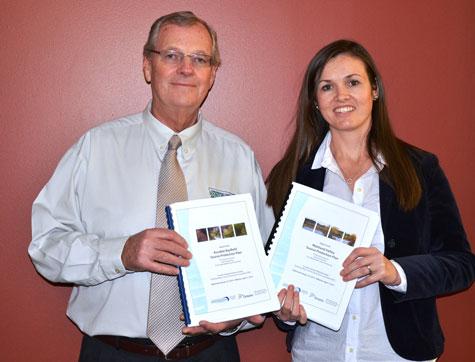Source protection plans

A local source protection committee for drinking water source protection has praised the Province of Ontario for approval of source protection plans for the Maitland Valley and Ausable Bayfield Source Protection Areas.
“The policies in the new Source Protection Plans will reduce risk to local drinking water,” said Laurence Brown, Chairman of the Ausable Bayfield Maitland Valley Source Protection Committee (SPC). “The Plans will reduce this risk through a practical and local approach to manage threats in the most vulnerable areas of our region.”
The 15 community members on the committee, as well as liaisons, have worked hard for the past seven years to prepare terms of reference, assessment reports, and source protection plans, according to Brown.
The plans provide policies to reduce risk to drinking water. There are 21 activities that may, in certain areas and certain circumstances, pose a threat to drinking water. Those activities include septic systems, home heating oil, farm use of pesticide, fertilizer and manure and chemical storage.
The policies address activities in four types of vulnerable areas: wellhead protection areas (groundwater) around municipal wells; surface water intake protection zones; significant groundwater recharge areas; and highly vulnerable aquifers. People may find the maps of these areas by visiting www.sourcewaterinfo.on.ca
Threat activities may be low, moderate or significant. In this region, significant threats to drinking water are only found in wellhead protection areas (WHPAs). The policies in those relatively small vulnerable areas reduce risk by using tools ranging from education and outreach, to risk management plans, to restricted land uses to prohibition of some activities. There are fewer than 1,000 properties in the entire region where significant threats to drinking water could be present, according to Brown. There are fewer than 200 properties that will require risk management plans.
People in the region can also protect water through positive actions in highly vulnerable aquifers (HVAs) and significant groundwater recharge areas (SGRAs). Plan policies for those areas include education and outreach. Landowners are not required to comply with policies in those areas but Brown said he hopes people will have regard for the plans’ policies for moderate and low threats and voluntarily consider what positive actions they can take.
The Ontario Ministry of the Environment and Climate Change (MOECC) posted the plan approval on the Environmental Bill of Rights (EBR) Registry on January 22, 2015. The plans take effect on April 1, 2015. The MOECC also approved Updated Assessment Reports for the Maitland Valley and Ausable Bayfield source protection areas on December 10, 2014.
Source Protection Plan Open Houses to provide information about the policies, threats, and maps are planned for:
Thursday, February 26 – REACH Centre, Clinton, 3 – 7 p.m. Wednesday, March 25 – North Huron Wescast Community Complex, 99 Kerr Drive, 169 Beech Street, Wingham, 3 p.m. – 7 p.m. The approved drinking water source protection plans are posted online at www.sourcewaterinfo.on.ca. People can also inspect a copy of the plans in person at the Maitland Valley or Ausable Bayfield conservation authority offices during regular business hours. Maitland Valley Conservation Authority’s office is located at 1093 Marietta Street in Wroxeter. Phone 519-335-3557 or visit mvca.on.ca for business hours. Ausable Bayfield Conservation Authority’s office is located at 71108 Morrison Line, east of Exeter and just south of Highway 83. Phone 519-235-2610 or 1-888-286-2610 or visit abca.on.ca for business hours. For more information on drinking water source protection in your region visit: www.sourcewaterinfo.on.ca